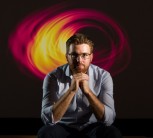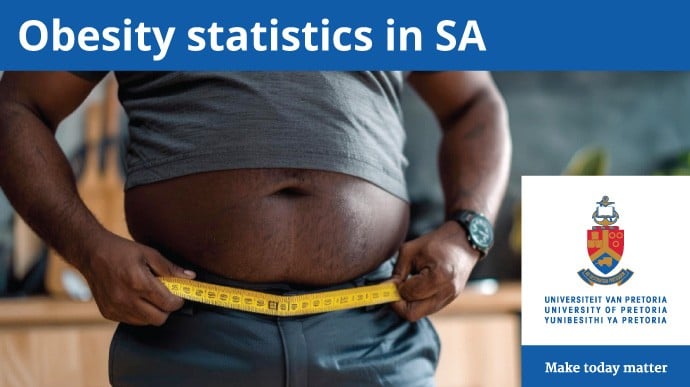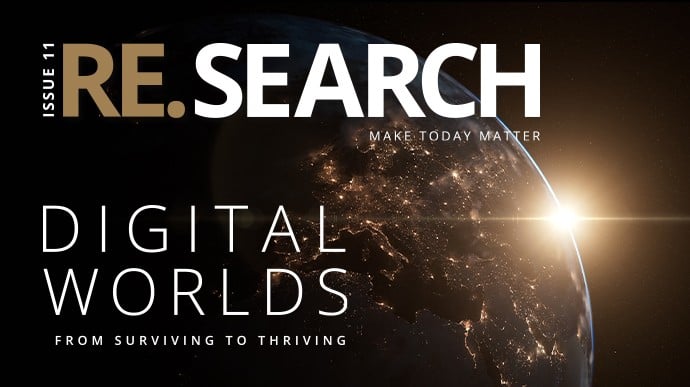The Event Horizon Telescope (EHT) collaboration – which produced the first-ever image of a black hole and of which the University of Pretoria (UP) is an associate institute – has revealed a new view of the massive object at the centre of the M87 galaxy: what it looks like in polarised light.
This is the first time that astronomers have been able to measure polarisation, a signature trait of magnetic fields, this close to the edge of a black hole. The observations are key to explaining how the M87 galaxy, which is located 55 million light years away, is able to launch energetic jets from its core. The research involved more than 300 researchers from multiple organisations and universities worldwide, and the findings were published today by the EHT collaboration in two separate papers in The Astrophysical Journal Letters.
The image of the black hole that scientists released on 10 April 2019 revealed a bright ring-like structure with a dark central region, the black hole’s shadow. Since then, the EHT collaboration has delved deeper into the data on the object at the heart of the M87 galaxy collected in 2017, and discovered that a significant fraction of the light around the M87 black hole is polarised. The team were able to directly observe the black hole shadow and the ring of light around it, with the new polarised-light image clearly showing that the ring is magnetised.
“We are now seeing the next crucial piece of evidence to understand how magnetic fields behave around black holes, and how activity in this very compact region of space can drive powerful jets that extend far beyond the galaxy,” says Monika Mościbrodzka, coordinator of the EHT Polarimetry Working Group and Assistant Professor at Radboud University in the Netherlands. “Unveiling this new polarised-light image required years of work due to the complex techniques involved in obtaining and analysing the data,” adds co-coordinator of the Working Group, Iván Martí-Vidal, a GenT Distinguished Researcher at the University of Valencia in Spain.
Light becomes polarised when it goes through certain filters, like the lenses of polarised sunglasses, or when it is emitted in hot regions of space that are magnetised. In the same way that polarised sunglasses help us to see better by reducing reflections and glare from bright surfaces, astronomers can sharpen their vision of the region around the black hole by looking at how light originating from there is polarised. Specifically, polarisation allows astronomers to map the magnetic field lines present at the inner edge of the black hole.
Astronomers have relied on different models of how matter behaves near black holes to better understand this process. But they still don’t know exactly how jets larger than the galaxy are launched from its central region, which is as small as the solar system, nor how exactly matter falls into the black hole.
With the new EHT image of the black hole and its shadow in polarised light, astronomers have been able to look into the region just outside the black hole where this interplay between matter flowing in and being ejected is happening.
“UP has been proud to be an associate institute of the EHT collaboration since 2018, forming part of an international collaboration that creates the sharpest images in astronomy,” explains Professor Roger Deane, founder of the UP Radio Astronomy Research Group and now UP Extraordinary Professor. “This globe-spanning team and network of telescopes work in concert to reveal previously unseen features of black holes. It’s wonderful to build up UP postgraduate student expertise in this exciting, cutting-edge scientific endeavour within which Southern Africa has a unique role to play.”
Prof Roger Deane
March 24, 2021

 Infographic
Infographic
The prevalence of obesity is a significant concern, with recent global statistics showing that one in eight people worldwide are living with obesity. In Africa, the situation is more dire, with one in five adults affected; in South Africa, the figure is even higher, with one in four adults living with obesity.
 Story
Story
Researchers at the University of Pretoria (UP) may have identified the gene that is responsible for diet-related obesity. By exploring the role of the novel gene Slc7a8, they have made a potential breakthrough in current knowledge about the cellular mechanisms that drive fat accumulation. This understanding is crucial in developing effective treatments.
 Story
Story
The latest issue of the University of Pretoria’s award-winning RE.SEARCH magazine is available now and reflects a shift towards both a fresher design and outlook. This edition is curated under the theme ‘Digital’, and offers a glimpse into some of the fascinating research we’re doing at UP to drive digital leadership and innovation.
Copyright © University of Pretoria 2025. All rights reserved.
Get Social With Us
Download the UP Mobile App